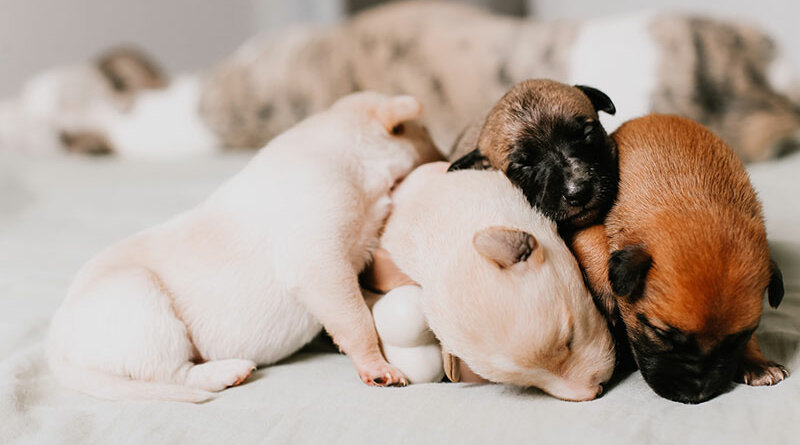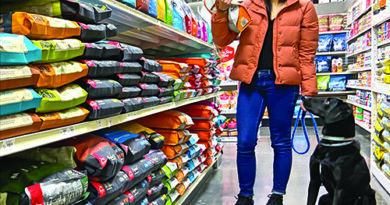How to Start a Dog Rescue
Other Mothers, a Portland, Ore., animal rescue group devoted to pregnant dogs and their pups, was founded and is directed by Linda Caradine. Here, Caradine offers invaluable advice on how to start a rescue, including how she navigated various bureaucratic channels to get the well-respected and successful group up and running.
Quick Tips on Starting an Animal Rescue
• Seek out advice from other dog rescuers and animal shelters.
• Pick your rescue niche and stick to your choice.
• Develop a business plan.
• Recruit a group of devoted and highly experienced volunteers, including local merchant and business supporters.
• Work with the veterinary community to obtain free or reduced-rate procedures.
• Obtain 501(c)(3) nonprofit status, which is invaluable for fundraising.
• Publish a newsletter to promote supporters and adoption success stories.
• Make spay/neuter a top priority.
The idea of starting my own animal rescue group had been with me for years before I finally embarked on this path in 2003. You might say it was destiny, given my love of animals and relative unsuitability for the other pursuits I’d attempted over the years.
In the beginning, I volunteered with the Oregon Humane Society. There, I met Sharon Harmon, the genius executive director who turned that organization into a juggernaut of humane societies. So, when I began to contemplate starting my own nonprofit rescue group, I could think of no one better than Sharon to consult about my idea.
While she probably doesn’t remember our conversation, I certainly do. Sharon gave me the two pieces of advice that shaped my entire enterprise and that I never strayed from. First, select a specific niche rather than trying to save every animal in the world. Second, stay small and stick to the stated mission.
GET THE BARK IN YOUR INBOX!
Sign up for our newsletter and stay in the know.
Niche Established
While I initially included both dogs and cats in my rescue effort, I eventually chose to concentrate on pregnant dogs and their offspring. I saw a need there because many shelters didn’t have special facilities for neonates, nor did they have legions of foster volunteers who could be counted upon to care for these animals in their homes.
In a best-case scenario at conventional shelters, if the pregnant dog herself was not euthanized, she was spayed, thus aborting the puppies. I get the rationale. There are already too many unwanted puppies, so why bring more into the world?
Though this made sense in general, it seemed to me that those puppies should have a chance at life. After all, this was Portland, Ore.—Dogtown, USA—where there was actually a shortage of available dogs and puppies for adoption. In fact, a lot of shelters transported them here from around the country in order to save them from death row in kill shelters.
I was also determined to take in pregnant dogs and/or their litters only from shelters rather than from individuals. (That’s worked out pretty well, although I did take them from individuals once in a while, when no other recourse was available.) So, this became my niche.
Following Sharon’s advice is what kept me from going crazy or burning out after the first couple of years. I freely admit that I can’t save them all. But I like to think that I do my part and that, together with all the other dog rescues and shelters, we can save them all.
Apparently, my chosen niche was a good one. Early on, I found lots of private shelters and county animal-control agencies willing to work with me. When they received a dog that turned out to be pregnant, they called me and I went to get her. She would then go to a foster home (or stay in my home), where she could become acclimated and have her puppies in a comfortable environment.
Volunteers Sign Up
What made my business model different was that I recruited a very special group of foster families, people who were devoted to caring for the moms and pups for extended periods of time. It takes a certain kind of person to open their home to an animal for months on end; transport her back and forth to vet appointments; and put up with a houseful of yipping, pooping puppies. Not to mention, to foot the bill for most of the expenses along the way.
People come to this work from all sorts of backgrounds. Some are like me and want to save an animal. Others are families interested in having their children witness the miracle of birth. Yet others are empty-nesters who just want some babies to cuddle. Regardless of their motives, the folks who became foster parents for Other Mothers either had advanced backgrounds in dog care or soon gained a high level of experience by raising their first litter with my guidance.
Without exception, the people who volunteered for foster duty were fully dedicated to their assignments. Not a single one changed their mind mid-litter and pleaded with me to take them all away. This is saying a lot, because I’ve had foster dogs bite, destroy furniture, chew up designer handbags and do all manner of damage out of fear and confusion. One brawny Pit mom tore out an entire door jamb to get to her pups in another room.
These folks were committed to doing whatever needed to be done, as were those who adopted our animals. (I might add that I’ve only received two bad checks in all the years I’ve been doing this. Even then, they were honest mistakes rather than an attempt to scam me or my organization.) I’ve never considered myself a great people person, but I will say that starting this group has shown me the best part of human nature.
Believe me, too, when I tell you that rescued dogs feel grateful to their rescuers. Almost all of the mothers I cared for exhibited the same incredible gratitude. It seemed like the more wretched they were when arriving at my house, the harder they tried to please me. Once they’d had their puppies and recovered from the birthing process, they became super-tuned-in girls with a sixth sense about how they could make me proud.
Vets Sign On
In those early days, I was lucky to find veterinarians who were willing to provide pro bono spay/neuter services for the mom and puppies. This allowed me to ensure 100 percent compliance with my rule that all animals had to be altered prior to adoption. Giving these dogs a chance at life came with the strict vow that this would be the end of the line. No additional puppies would be born to my animals. Period.
My vets were heartily in favor of this rule, and gave selflessly to the cause for several years. I found these big-hearted vets by sending out a simple postcard to all the local animal hospitals, describing my organization and asking for their help. I can’t thank those vets enough who responded to my call.
Figuring Out Fundraising
I learned that the way most shelters made their money in adoption fees was by rapid turnover. That was clearly not possible when dealing with my select group. As mentioned, it takes several months to birth, wean, raise and socialize puppies, and then have them altered prior to adoption.
As a small dog rescue group, we had no endowment, and no one was making large donations. We had to come up with fundraisers to fill that gap. A lot of local merchants were only too glad to sponsor us. Pet shops gave us food and merchandise. We did dog washes, held yard sales, provided boarding and walking, and did everything else that was legal and would provide money for the cause.
It also helped that 100 percent of our donations went to the animals. We had no administrative costs and no paid staff. Beyond in-kind donations, expenses such as pet food, equipment and postage were all strictly out-of-pocket.
As an aside, most people think there’s some sort of parent-child relationship between the HSUS or the ASPCA and their local humane societies. Not so. Each society is a separate 501(c)(3) nonprofit organization. At the time I started up, there were few resources available to the little guy.
Newsletter Outreach
We issued a monthly newsletter that touted our recent adoption stories, gave general pet advice and information, and featured a wish-list of things we needed, such as litter, paper towels and so forth. We also put out a plea for donations in each issue. Since the newsletter went out to a specialized audience of prior adopters, operators of pet businesses and other stakeholders, the resulting donations were pretty spectacular. Animal people have a sincere desire to be of help, and will help monetarily even when they are unable to provide hands-on assistance. In addition, we endorsed the vets who worked with us, and encouraged people to use them for their own pets.
Peak Performance Achieved
It wasn’t long before we built up a good reputation in the community. At the peak of our operation, we had more capacity than we were able to fill, and I spent a fair amount of time calling and emailing various shelters and animal-control agencies, looking for pregnant dogs.
Though Other Mothers was what could be called a limited-admission rescue group—that is, only a finite number of animals were accepted, depending upon whether we had the financial and human resources to accommodate them—for quite a while, there was pretty much a steady stream of incoming moms looking for a port in the storm.
During the boom years, just as soon as I got one litter spayed, neutered, vaccinated and adopted, the phone rang and I was bringing the next one in.
Portland was such a special place at the inception of Other Mothers. The rescue dog had become our supreme being. We had rescue groups for deaf dogs, blind dogs, old dogs, dogs with various diseases and disorders, and, of course, the ubiquitous breed rescues. The much-maligned Pit Bull types were especially embraced here in Doglandia. We even had an annual city event for which Pits were dressed up in their pink Sunday best and invited to strut their stuff through downtown Portland.
Looking Back
People always ask me how I gained the confidence to start this thing and run it day in and day out. Part of the answer is simply age. I have enough life experience to say, What the hell, I want to do this. I’ve been through the best and worst parts of a corporate career. I’ve had my heart broken enough times to have developed a fairly thick skin. In other words, I am a stubborn old broad who wasn’t going to let anything stand in my way.
Once I bought my first home at age 50, specifically for this purpose, I knew the rest of the plan would fall into place. I started hitting garage sales for dog crates and other equipment. I read up on all phases of animal husbandry. I consulted experts for advice (such as Sharon Harmon at Oregon Humane). I networked the heck out of the animal community to find information and resources. I guess it just never occurred to people to question me. They believed in me simply because they could tell I wasn’t going to take no for an answer.
It was an ongoing process. I adapted two of my three bedrooms into a kind of canine maternity ward. Next, I wanted to cover and enclose my back deck to make a comfy lounging area for my expectant moms. Asking for money has never been my strong suit but, even so, people were very generous and found ways to help when needed. It was just a matter of time until I’d come up with the money and know-how to further my deck project. (If only all the world were made up of animal people.) Admittedly, a few of my neighbors and I didn’t always see eye-to-eye about how I choose to utilize my property, but most seemed to put up with me pretty admirably.
Extending Our Reach
By 2018, we had been a solid, well-oiled machine for more than 15 years. But that year, for the first time, we had a summer without dogs. The reasons were many. First, other shelters were just as busy developing foster volunteers as I was. Increasingly, an incoming pregnant female could be placed in their own foster network and retained, rather than transferring her out to Other Mothers. Second, at least here in Portland, people were getting hip to spay/neuter and there were fewer unwanted litters out there in the community.
It was a good result to years of preaching to the masses about spay/neuter, and I couldn’t very well object to people listening. Of course, I missed the frequent pitter-patter of little feet but, at the same time, I was happy to have been made largely obsolete. It meant that more dogs were being saved, which is why I started this enterprise to begin with.
In response to this new reality, I extended Other Mothers’ reach. We still pull pregnant dogs from local shelters but decided to also check with kill shelters in other states, and even other countries. I started by finding out how the bigger shelters in this area were bringing dogs in, and emulating them by building relationships with organizations in other areas.
Transportation was the biggest issue, but I was confident that we could develop a small group of people who would travel back and forth between Portland and wherever. I imagined an army of retired animal-lovers (including me) who would be all too glad to respond to the call for a road trip when needed.
Other Mothers has changed, certainly, but it’s not going away any time soon. This work has given me so much in the way of enrichment, taught me new skills, and allowed me to hobnob with some very special animals and people over the years, so I’m not about to hang it up yet. There are still animals out there who need rescuing and I’m very good at what I do. Why stop now?




